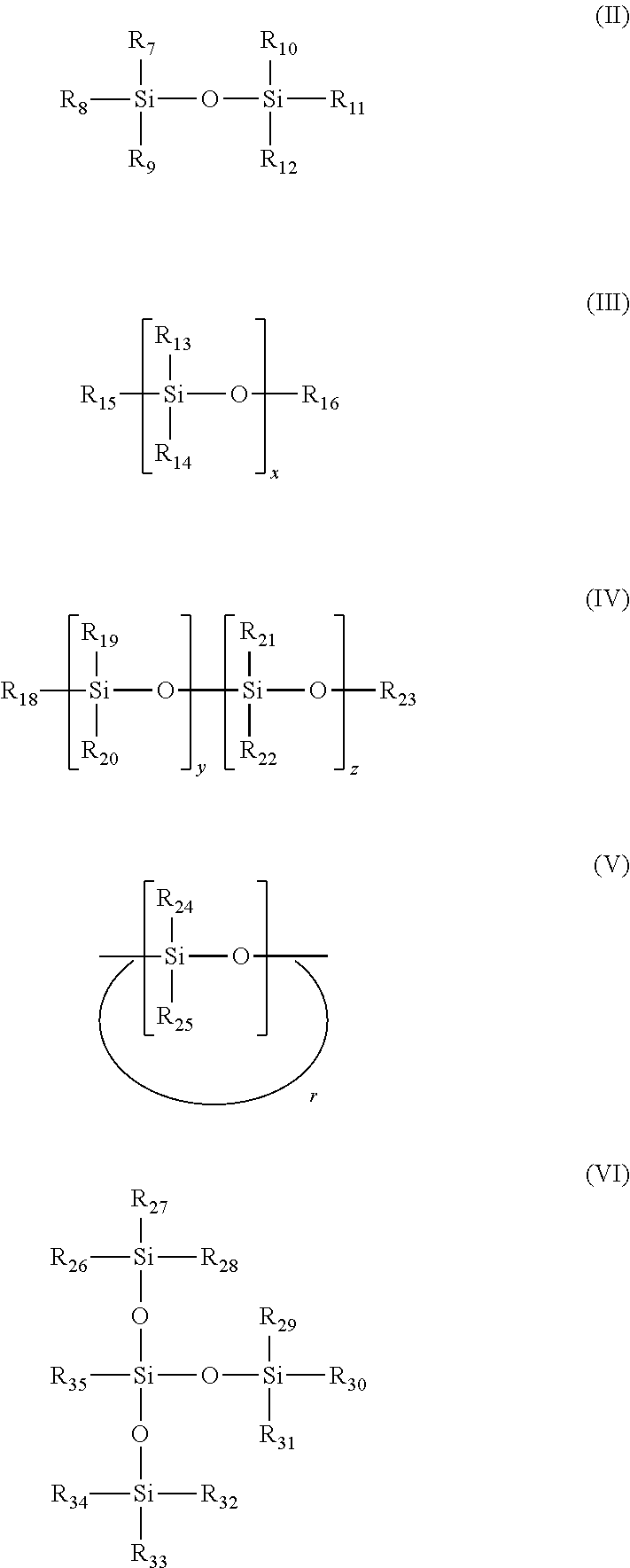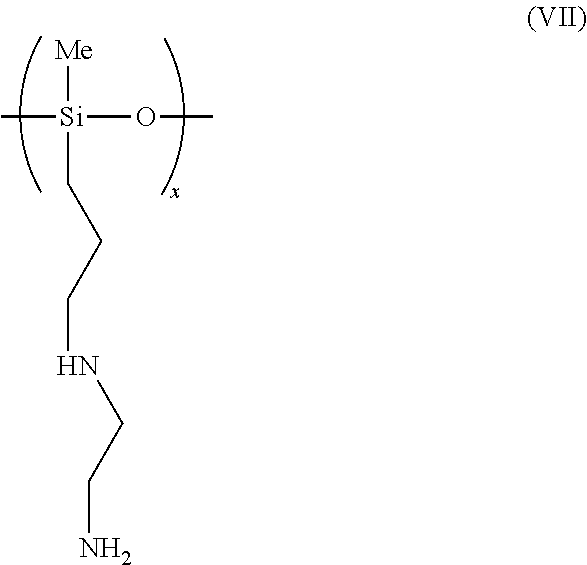Liquid carbon dioxide absorbents, methods of using the same, and related systems
a liquid carbon dioxide and absorbent technology, applied in the field of liquid carbon dioxide absorbents, can solve the problems of difficult (if not impossible) cosub>2, 83% increase in the overall cost of electricity for the pc plant, and low cost of amine-based systems, etc., to achieve low cost, low volatility, and high thermal stability
- Summary
- Abstract
- Description
- Claims
- Application Information
AI Technical Summary
Benefits of technology
Problems solved by technology
Method used
Image
Examples
examples 1-12
[0042]Reaction of silicon-based materials with CO2 in the presence of a hydroxy-containing co-solvent.
[0043]To illustrate the ability of the hydroxy-containing co-solvent triethylene glycol to enhance the CO2 absorption of various silicon-based materials, as well as providing a liquid medium, the following Examples 1-12 were conducted. The silicon-based materials were exposed to 1 atmosphere of CO2 in the presence of, or not in the presence of, the hydroxyl-containing co-solvent triethylene glycol (at 50 wt %, with the exception of example 4 at 75 wt %) at 40° C. for 2 hours (h) with mechanical stirring.
example 2
[0045]2.0194 g of 1,3-Bis(3-aminopropyl)tetramethyldisiloxane and 2.0174 g of triethylene glycol were charged into a flask and allowed to react with CO2 according to the procedure described in Example 1. The total weight gain was 0.4089 g. This corresponded to 114% of the theoretical amount of weight that should have been gained if all the amine groups had reacted with a stoichiometric amount of CO2. In contrast to Example 1, the reaction product here was a liquid.
example 4
[0047]2.0168 g of aminoethylaminopropyl methylsiloxane oligomer and 4.0292 g of triethylene glycol were charged into a flask and allowed to react with CO2 according to the procedure described in Example 1. The total weight gain was 0.4803 g. This corresponded to 87% of the theoretical amount of weight that should have been gained if all the amine groups had reacted with a stoichiometric amount of CO2. The reaction product was a liquid, in contrast to comparative Example 3, which did not include triethyleneglycol.
PUM
| Property | Measurement | Unit |
|---|---|---|
| vapor pressure | aaaaa | aaaaa |
| temperatures | aaaaa | aaaaa |
| weight | aaaaa | aaaaa |
Abstract
Description
Claims
Application Information
 Login to View More
Login to View More - R&D
- Intellectual Property
- Life Sciences
- Materials
- Tech Scout
- Unparalleled Data Quality
- Higher Quality Content
- 60% Fewer Hallucinations
Browse by: Latest US Patents, China's latest patents, Technical Efficacy Thesaurus, Application Domain, Technology Topic, Popular Technical Reports.
© 2025 PatSnap. All rights reserved.Legal|Privacy policy|Modern Slavery Act Transparency Statement|Sitemap|About US| Contact US: help@patsnap.com



